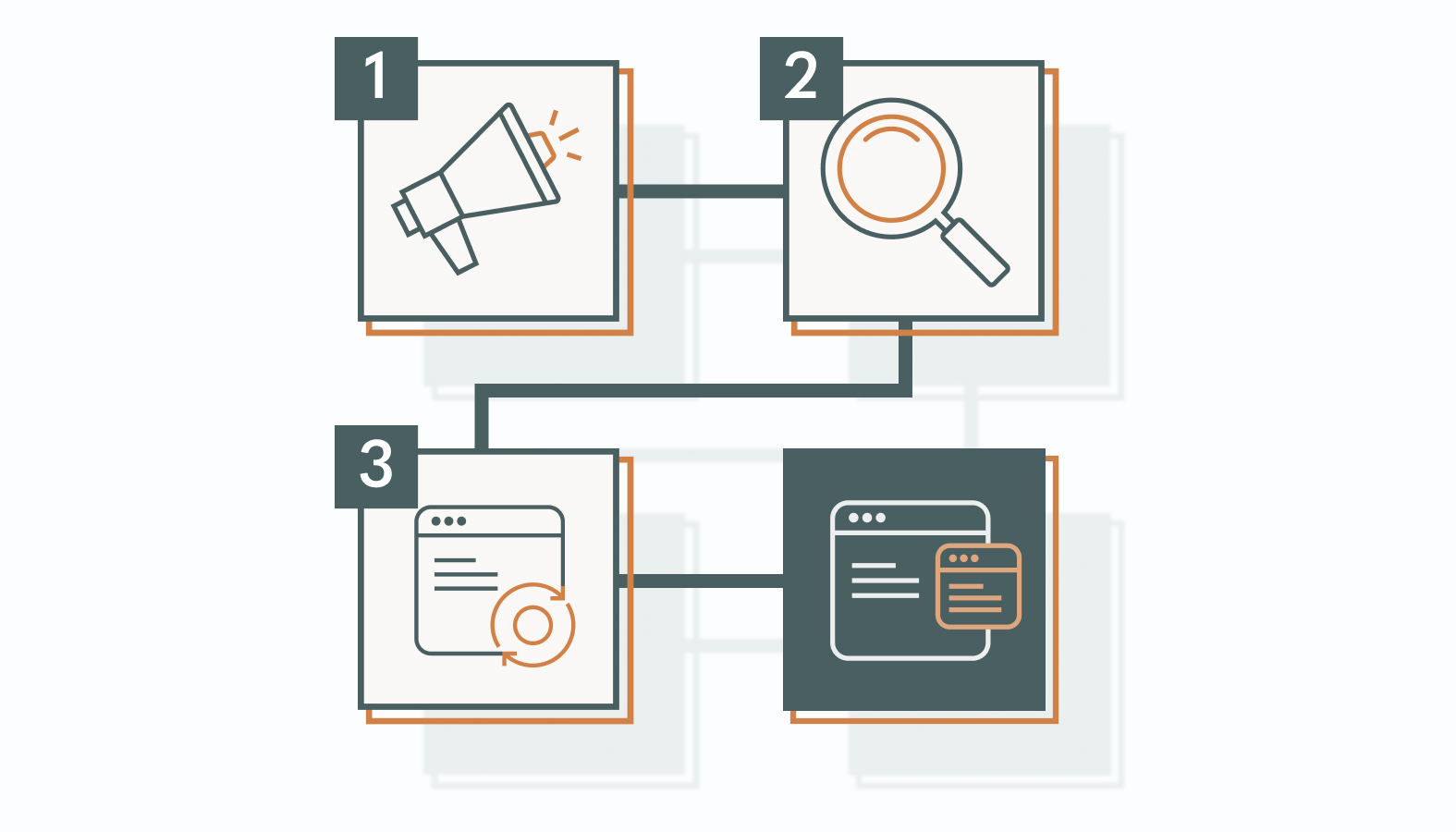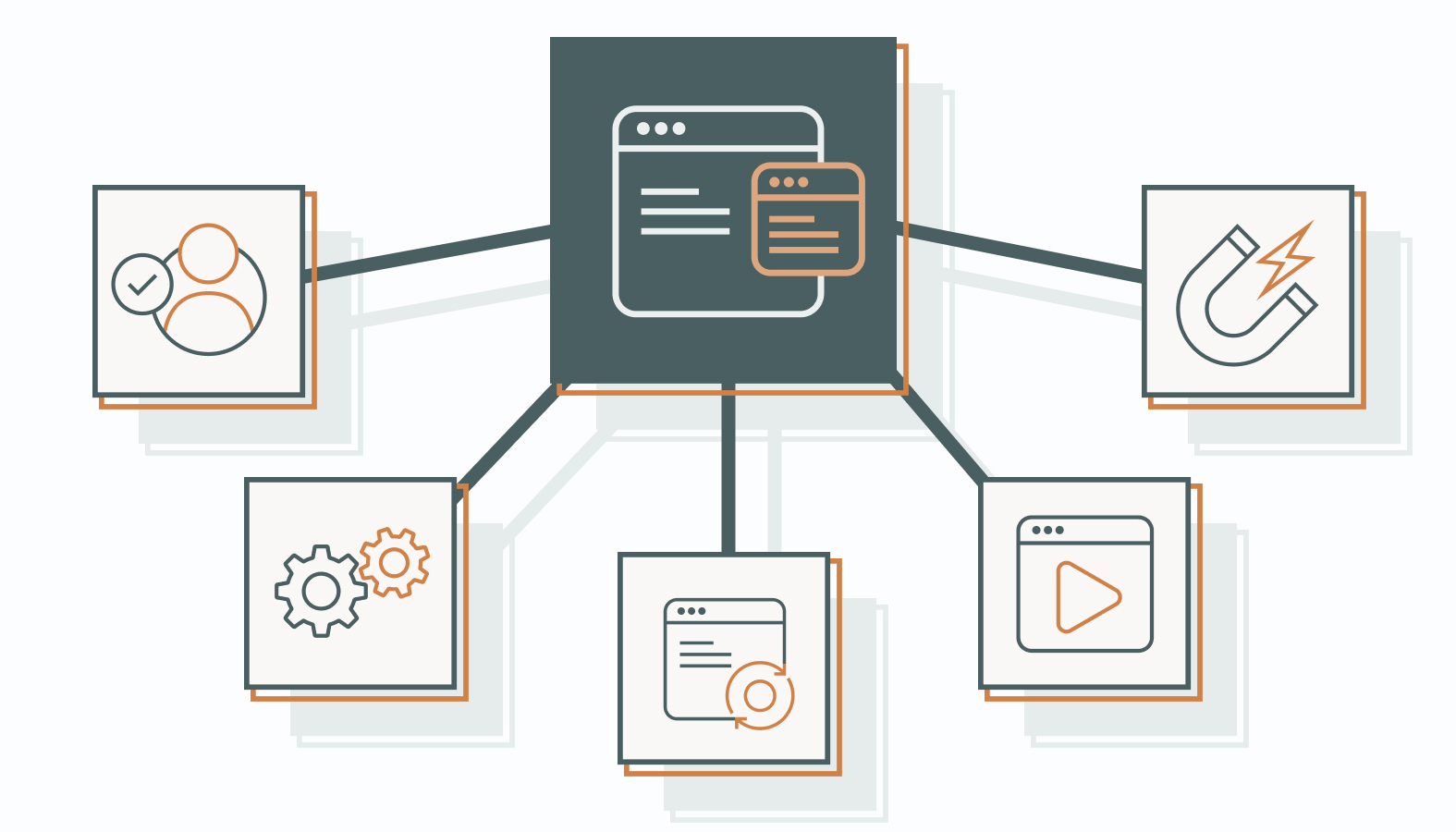With the wide reach of the Internet, web marketing has become essential for small to medium-sized businesses looking to expand their reach beyond local boundaries.
This guide will help you understand web marketing and give you tips to do well online.
Decoding Web Marketing: A Definition
Web marketing, also known as Internet marketing or digital marketing, is promoting products or services over the Internet. But it’s more than just an advertisement on a webpage. It covers various marketing strategies and technologies to reach consumers online.
Web marketing includes search engine optimization (SEO) to improve organic search rankings, content marketing to attract and engage audiences, pay-per-click (PPC) advertising for quicker exposure, social media marketing to build brand presence, and email marketing for personalized communication. It also includes affiliate marketing, influencer collaborations, and video promotions.
As technology evolves, web marketing is becoming vital for anyone who wants to be seen online, such as online shops, digital content creators, and service providers. By combining creativity, data analysis, and technology, it helps business owners reach audiences worldwide, interact with them in real time, and adjust campaigns based on performance.
Web Marketing vs. Traditional Marketing: A Modern Perspective
Today, choosing the right marketing approach can make all the difference. Do you invest in web marketing to help you reach customers online or stick with traditional methods like print and TV ads?
The answer isn’t clear-cut. You must understand the strengths of each and how they can work together.
Let’s take a closer look at how digital and traditional marketing compare and see how combining them could give your business the best of both worlds.
Medium of Delivery
In today’s market, the mediums of delivering marketing messages vary greatly online and offline. Web marketing uses social media, email addresses, and other websites to quickly reach many people and allow them to interact.
In contrast, traditional marketing uses print, television, radio, and direct mail, which appeal to the senses and offer a tangible presence. While traditional advertising methods have long established their value through extensive reach and physical engagement, they can’t change quickly or respond instantly like web marketing channels.
Combining traditional and web marketing is essential to fully reach and connect with the target audience.
Audience Reach
Audience reach in marketing spans from the local level to a global scale. Web marketing lets a brand reach a wide and varied audience online with great precision.
Meanwhile, traditional marketing excels in reaching local communities but doesn’t offer the detailed targeting and expansive reach that its digital counterpart provides.
Using both methods can harness the personal touch of traditional methods with the extensive, data-driven reach of web marketing, leading to a balanced approach to audience engagement.
Interactive and Engagement
In modern marketing, web marketing stands out in creating active online communities through real-time social media conversations and multimedia experiences that actively engage audiences.
Traditional marketing, however, tends to focus more on one-way messaging, which often doesn’t encourage as much immediate interaction.
Analytics and Measurability
Marketing now relies heavily on data. Using web marketing offers a wealth of information that helps understand user behavior, campaign performance, and return on investment, leading to more accurate strategies.
Traditional marketing, while effective, often doesn’t provide the same level of measurability and show the full picture of engagement and impact as clearly.
Cost and Budget Flexibility
Flexibility in marketing budgets is paramount, and web marketing excels in this area. It is cost-effective and allows for quick budget adjustments based on how the campaign is doing.
This is in marked contrast to traditional marketing, where there’s a strict budget due to fixed upfront costs, making it challenging to adapt in response to target market feedback and performance metrics.
Essential Examples of Web Marketing
There are several web marketing strategies at your disposal. These methods are essential to online success and will help you navigate the virtual space effectively.
Search Engine Optimization (SEO)
SEO is the key to online visibility. It leads organic website traffic to your brand by using keywords and backlinks and ensuring an outstanding user experience. By keeping up with search engines’ changing algorithms, SEO ensures your site ranks well, making it easily discoverable by customers actively searching for your services or products.
Pay-Per-Click (PPC) Advertising
PPC quickly gets your brand noticed through sponsored listings on search engines and partner websites. This strategy allows you to manage your budget closely and target specific groups, which can lead to a more substantial return on investment (ROI) when done right.
Content Marketing
Content marketing involves creating content that resonates with your audience on a personal level. By making helpful blog posts, ebooks, infographics, and videos, you’re not just getting attention but building an authentic connection that positions your brand as a trusted authority.
Email Marketing
Email marketing serves as the direct line to your audience’s inbox. It uses personalized messages and segmented lists to boost engagement and turn a casual reader into a loyal customer. It also helps keep a lasting relationship with customers.
Social Media Marketing (SMM)
SMM makes your brand active and relatable on social media. Each platform serves as a stage for your story, whether through tweets, posts, or stories. This strategy focuses on starting conversations, uniting communities, and crafting a brand personality that’s not just followed but loved.
Display Advertising
Display online advertising works like a digital billboard. It places eye-catching ads on relevant websites to gain attention. These ads not only boost your brand’s visibility but also serve as links to your products, encouraging clicks and brand recall.
The Strategic Edge of Web Marketing
In today’s market, the strategic edge provided by web marketing can be the difference between thriving and merely surviving. Web marketing offers several benefits that can help any business, big or small, get ahead of the competition. Let’s explore how these advantages can help your business succeed online.
Web Marketing for Targeted Audience Reach
One of the biggest advantages of web marketing is its ability to hone in on a specific audience with laser precision. It uses data to target consumers based on their behaviors, interests, and demographic information. This targeted approach not only increases the relevance of marketing efforts but also significantly boosts conversion rates.
When you speak directly to those most likely to be interested in your offer, you’re not just reaching an audience – engaging with potential customers.
Enhancing Brand Recognition Digitally
Creating a well-known brand online is like making art. It takes careful, regular marketing on different websites and social media to make your brand stick in people’s minds.
More than being seen, it’s about connecting with your audience by sharing great content, showing up in search results, and talking to them on social media. This way, a brand can really stand out online and tell its story to the world.
Cost Efficiency of Web Marketing Campaigns
Web marketing stands out not only for its effectiveness but also for its cost efficiency. Traditional advertising often requires significant upfront investment with no guarantee of success, and its shotgun approach means much of the budget may be spent reaching disinterested parties.
Web marketing campaigns, in contrast, can be started with a modest budget, scaled as they prove successful, and adjusted in real time to maximize impact. Additionally, the ability to run highly targeted campaigns ensures every dollar spent is more likely to reach a receptive audience, maximizing the return on investment.
Measurability and Data-Driven Insights
Web marketing lets you measure everything about a campaign. Businesses have tools to track how users interact with their ads and websites, from the number of clicks to the sales made. This data helps businesses make smart choices and improve their marketing on the fly. With data leading the way, companies can keep getting better at reaching and winning over customers.
Crafting an Effective Web Marketing Plan: A Step-by-Step Guide
A well-crafted web marketing plan is your guide to achieving your online goals. Here’s how to create an effective web marketing plan.
Identifying Goals and Setting Targets
The foundation of a successful web marketing plan starts with clear, measurable, achievable, relevant, and time-bound (SMART) goals. Whether it’s increasing web traffic, generating leads, boosting sales, or building brand awareness, your goals should guide your every decision.
Budgeting for Web Marketing Success
Allocate your resources wisely across the various channels of web marketing. Consider the costs associated with SEO, PPC, content creation, social media management, and other tactics you intend to use. Flexibility is key; be prepared to reallocate funds based on channel performance.
Selecting the Right Web Marketing Mix
Choose web marketing methods that fit your goals and target clients. Check how well SEO, PPC, content marketing, email marketing, and SMM will work for your type of business and competitors.
Prioritizing Marketing Methods Based on Business Goals
Not all marketing methods produce the same results for different goals. Prioritize those that align closely with your objectives. If brand awareness is the goal of web marketing, focus on content and social media; for lead generation, consider PPC and email marketing.
Incorporating a Balanced Mix of Organic and Paid Strategies
Use a mix of organic strategies like SEO and content marketing and paid efforts such as PPC and display ads. This ensures steady growth and allows you to capitalize on short-term opportunities.
Executing Your Web Marketing Strategy
A carefully designed web marketing strategy is only as good as its execution. Here are key steps to help you effectively implement your plan and ensure your efforts are successful.
Launching Your Web Marketing Campaign
Start your web marketing campaign with a clear launch plan. Ensure all elements – from your ads to your landing pages – work well and look good. Set up your launch to happen simultaneously across different platforms for a strong introduction to your market.
Monitoring and Measuring Campaign Performance
Once live, closely monitor your campaigns using analytics tools. Track key performance indicators like click-through rates, conversion rates, and social engagement to see if your campaign is effective.
Tweaking Strategies for Optimal Performance
Continuously analyze your data to improve your strategy and make necessary adjustments. If a channel or tactic is underperforming, adjust quickly and refine your targeting, messaging, or design to enhance search results and reach your target goals.
Tips and Tricks for Website Marketing Mastery
To succeed in web marketing, it’s crucial to stay ahead with tried-and-tested tips and innovative tricks. Let’s explore a few strategies that can enhance your web marketing mastery.
Personalization in Web Marketing
Personalization is more than using a customer’s name. It’s about creating experiences that resonate on an individual level. Use data analytics to segment your audience and provide tailored content, product recommendations, and offers that speak directly to their needs and interests.
Leveraging Automation for Efficiency
Automation is a game-changer in web marketing. Use marketing automation tools to schedule social media posts, send email campaigns, and manage online ads. It streamlines operations, reduces manual effort, and helps maintain a consistent presence online.
The Importance of a Responsive Website
Your website should be the foundation of your digital presence. Ensure it works well on various devices and screen sizes. A responsive website improves the user experience and is also favored by search engines, contributing to higher SEO rankings.
Integrating Video Content for Higher Engagement
Using videos is a strong way to market. Incorporate videos into your strategy to capture attention, explain complex products, and tell your brand story. You can reach many people with video content on various social media platforms like Facebook or even YouTube.
Remarketing Strategies to Capture Lost Leads
Not all visitors to your website convert on their first visit. Use remarketing to reconnect with users interested in your products or services. Through targeted ads and follow-up emails, you can encourage them to return and complete their purchase or sign-up.
5 Easy Steps to Get Started With Web Marketing
Starting your web marketing journey is more straightforward than you might think. Just follow these five simple steps to get your strategy off the ground and steer your business toward digital success.
Step 1: Define Your Objectives and Target Audience
Set clear goals for what you hope to achieve with your web marketing, such as more sales, better brand recognition, or improved customer loyalty. Use the SMART criteria to make your goals clear and reachable.
Know who you’re talking to by researching your audience. Find out what they like, what they need, and how they behave online. Create profiles for your ideal customers so your marketing messages hit the mark. This sets the stage for focused and effective marketing efforts that will speak directly to the people you want to reach.
Step 2: Build a Strong Website Foundation
Your website is your digital storefront and often the first impression you make. It must be strong, secure, and designed with your end user in mind. A great user experience keeps visitors on your site longer and encourages them to return. This means intuitive navigation, fast load times, and easy-to-understand content.
Search engine optimization ensures your site is discoverable to those searching for what you offer. And with more people browsing on their phones than ever before, mobile responsiveness is a must. Your site should look and function flawlessly across all devices.
Step 3: Develop a Content Strategy
Content is the voice of your brand online. It draws people in and keeps them engaged. Crafting a content strategy starts with understanding what your audience craves and then delivering it through blog posts, videos, infographics, and more. Your content should be compelling, provide value, and be directly tied to your web marketing objectives.
Plan your content with a calendar to ensure a steady stream of material that aligns with key dates and business goals. Remember, consistency is key to keeping your audience interested and engaged with your brand.
Step 4: Utilize Social Media and Email Marketing
Social media and email marketing are powerful channels for building and nurturing customer relationships. Social platforms allow for real-time engagement and can boost your content’s reach. They’re also a place to showcase your brand’s personality and have authentic conversations with your audience.
Email marketing, on the other hand, offers a direct line to your customers’ inboxes, allowing for personalized communication and encouraging exclusivity. Remember to grow your email list organically and send content that adds value to your subscribers’ lives. And always, always keep it permission-based.
Step 5: Monitor, Analyze, and Adapt
Finally, the beauty of web marketing lies in its measurability. Use analytics to track your efforts and understand what works and what doesn’t. This data is invaluable and enables you to tweak your strategy for better results.
A/B testing, engagement metrics, and conversion rates are just a few of the analytics tools at your disposal. Use them to iterate and improve continually. Adaptability is essential in digital marketing, so be ready to adjust when necessary to meet your business goals.
Capitalizing on Web Marketing Strategies for a Competitive Edge
Navigating web marketing is an exciting adventure for any business, big or small. As you’ve seen in this guide, the right strategies can make a huge difference in marketing your business online. With the ideas we’ve shared, you’re now equipped with the knowledge to boost your online presence and connect with customers better.
If you’re eager to dive deeper and see how web marketing can help your business grow, let’s talk. Our team of experts is ready to answer your questions and explore various digital opportunities for your business. No pressure, just a chance to learn more and share insights.
Schedule a candid conversation with us, and let’s chat about effective web marketing and how it can benefit your business.










